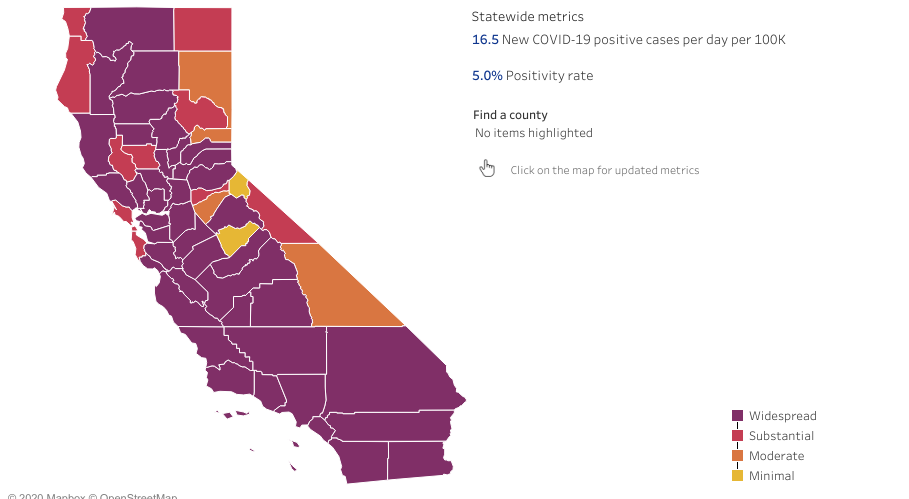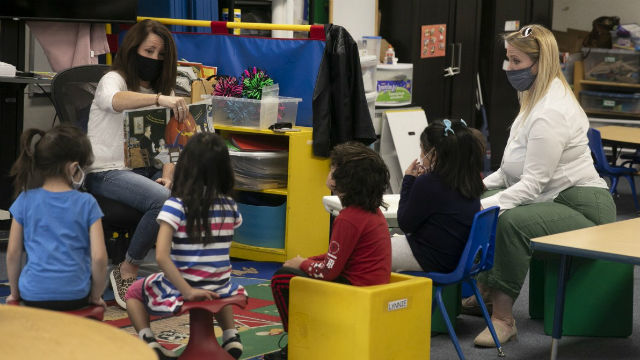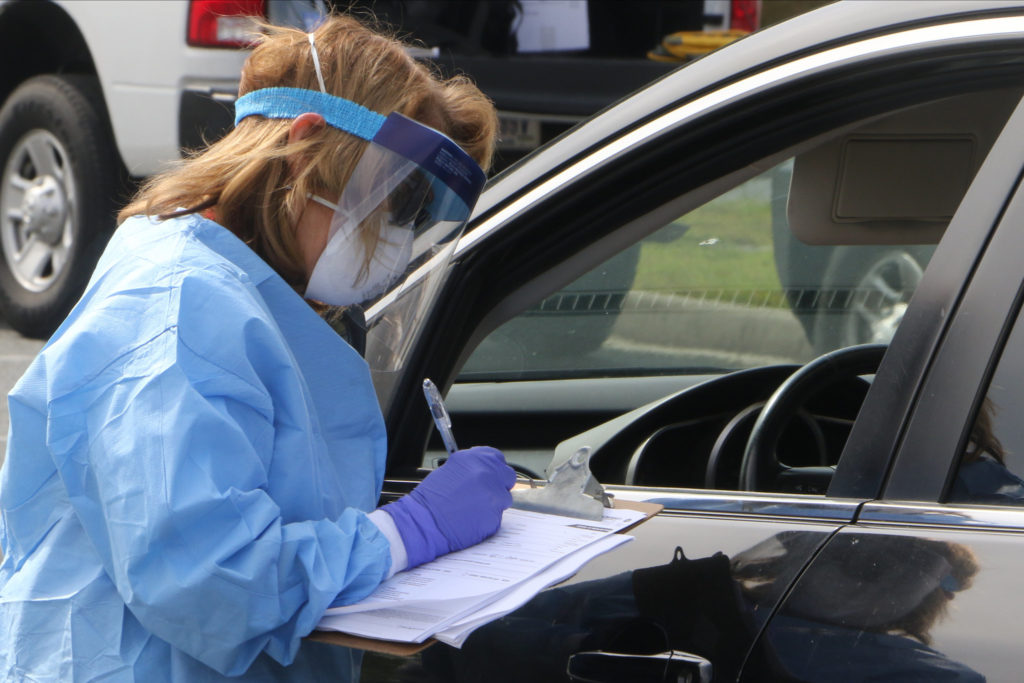
As COVID-19 cases sharply increase across the country and California, Governor Gavin Newsom and state public health pulled the “emergency brake” in the Blueprint for a Safer Economy on Monday to slow the spread of the virus.
When the changes go into effect Tuesday, 94.1% of California’s population will be living in the most restrictive reopening tier. Businesses in those counties will now have to adjust their operations to align with restrictions in the reopening tier. The state will reassess data continuously and move more counties back if necessary.
California is also strengthening its face covering guidance to require individuals to wear a mask whenever outside their home, with limited exceptions.
“We are sounding the alarm,” said Newsom. “California is experiencing the fastest increase in cases we have seen yet — faster than what we experienced at the outset of the pandemic or even this summer. The spread of COVID-19, if left unchecked, could quickly overwhelm our health care system and lead to catastrophic outcomes. That is why we are pulling an emergency brake in the Blueprint for a Safer Economy.”
The rate of growth in confirmed COVID-19 cases is faster than it was in July, which led to a significant peak in cases. Over the last week, California has averaged 7,985 cases per day, an 89.7% increase from two weeks ago, according to the Los Angeles Time coronavirus tracker. The state’s test positivity rate is also increasing, from 2.5% on Oct. 18 to 5% as of Monday afternoon.
“The data we are seeing is very concerning. We are in the midst of a surge, and time is of the essence. Every day matters and every decision matters,” said California Health and Human Services Secretary Dr. Mark Ghaly. “Personal decisions are critical, and I am I imploring every Californian to stay home if they can, wear a mask whenever they leave their homes, limit mixing, practice physical distancing and wash their hands.”
The 28 counties moving back into Tier 1(Purple/Widespread) include: Alameda, Napa, Santa Cruz, Butte, Nevada, Siskiyou,Contra Costa, Orange, Solano, El Dorado, Placer, Sutter, Fresno, San Benito, Trinity, Glenn, San Joaquin, Tuolumne, Kern, San Luis Obispo, Ventura, Kings,Mendocino, Merced, Santa Barbara, Santa Clara,Yolo, and Yuba.
The nine counties moving back into Tier 2 (Red/Substantial) include: Colusa, Marin, Plumas, Del Norte, Modoc, San Francisco, Humboldt, Mono, and San Mateo.
The two counties moving back into Tier 3 (Orange/Moderate) include: Calaveras and Sierra.
Counties will remain in these tiers until the State Public Health Officer determines it is appropriate to make modifications based on public health conditions and data.
To support California’s health care delivery system, the state has an additional 1,872 beds available at alternate care sites outside of the system that can be made available quickly if needed to respond to a surge in cases.
For more information about the Blueprint and what Californians can do to prevent the spread of COVID-19, visit covid19.ca.gov.






